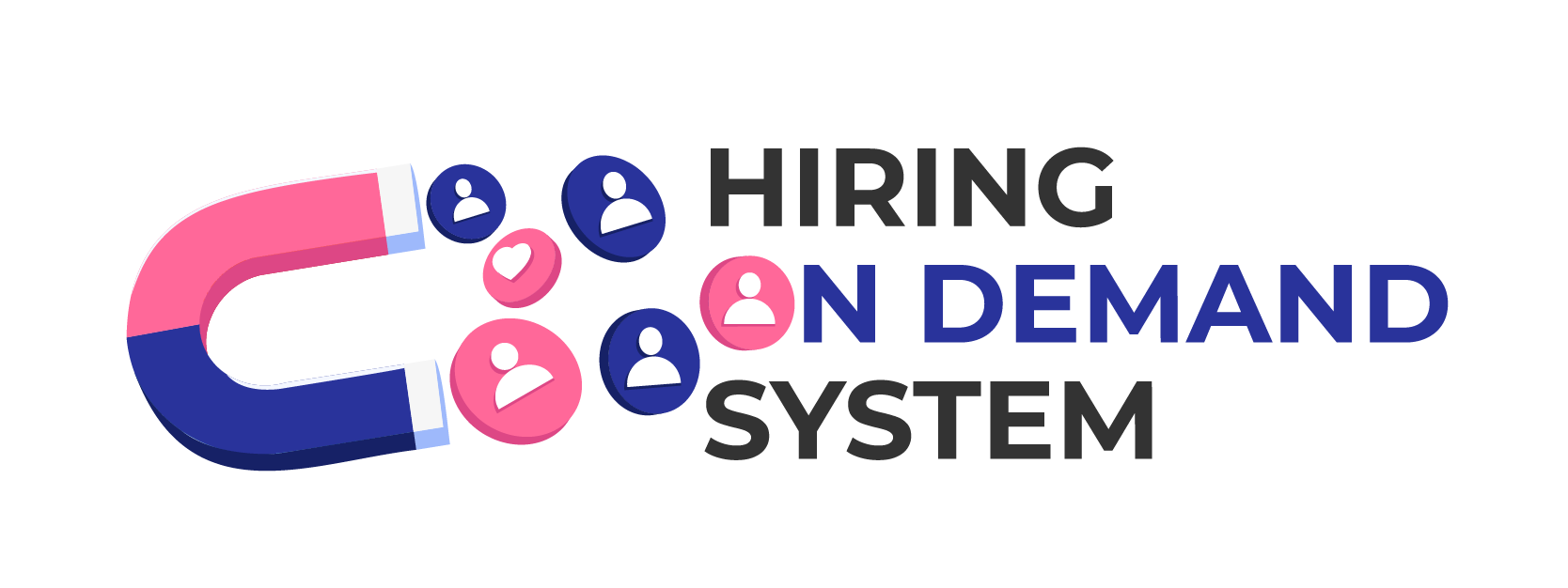Blog Posts

What Future Hires Do You Need

Listened to the full podcast here: https://spotifyanchor-web.app.link/e/zGQcB4dBXtb
Want to read the transcript instead?
(00:00)
Hello everybody. And welcome back to the podcast today. We're diving into your hiring goals and seeing if you're on track. So I really want to see which one you fall into because there are typically three types of people that we see. One class of people who don't really set goals. We have another class of people who set goals and then don't ever follow-up with them and kind of just continue on with their normal ways. And then we have people who check in on their goals and they're constantly reviewing. If they're on track, those are honestly the most successful. So if you fall into one of those other two categories, I really do want to encourage you to start doing that more in your business. You're just gonna see the world of a difference. And instead of having a scenario where you're six months from now, and you're still not on track for one of your goals, whether it's hiring, sales, you know, more systems, more processes, then you can nip it in the buck, but so much quicker because you're checking in typically on a weekly basis.
(01:05)
And you're able to say, Hey, well, this didn't go right. What can we do different next week? And it's inching away at your goal, which ultimately leads up to achieving it, especially if it, takes a few months to get there. All right, so when it comes to your team, I can dive into this topic for a while, but I want you to kind of draw it out on a piece of paper of your existing team, whether it's just you and you have like two or three workers in the field, draw your little organization chart. (if it's, if it's just, you draw your draw yourself and we'll, go into that next step for you.) But I want you to start with drawing your existing org chart. And then on another piece of paper, I want you to draw an org chart with the amount of people that you typically need.
(02:00)
And I want you to kind of see the difference. And on the second one, you could also cross off anybody who you didn't want from the first one. And you can kind of see more of what that looks like, whether your org chart changed to where it's you and then you have an office assistant or maybe your office assistant has another assistant, or maybe have, uh, a marketing, uh, a worker in the marketing department. Maybe have somebody more into the sales and you have another one in Legion. Like, what does your org chart look like? It's typically of course, well, it should be covering, you know, those pain points. And then also trying to get some stuff off of your plate as well too. That's what your future org chart should start to look like. And it's okay, it will evolve. And it will change.
(02:57)
It's not like a firm concrete org chart. That's gonna stay set there forever, but that's just gonna help you give, get a better idea of the hires that you need to have and who you need to get rid of. And I want you to ask yourself if you're on track to making that second org chart, if you're on track, awesome, continue on what you're doing and continue reviewing it every week and make sure that you're still getting closer. But the moment that you're not, you really wanna identify what is not going well and what can you do differently next week. So you guys could fix it and your team can fix it and make sure you're getting back on track. Now, we offer free hiring strategy calls. And I get the honor of speaking with so many different types of business owners. And I get to see the vulnerability and people openly saying like, Hey, I need help.
(03:56)
My workers are running the show. I have so many call-outs. I'm so overworked. And I'm mentally just stressed the heck out, like to the point where they're wanting to throw their hands up. I've seen some wanting to sell their business. Some say, this is like their last chance to, you know, get their business on track. And it's so easy. I feel like when we start a business to get some clients and especially if you're, you have a business where you're out in the field and you're part of bringing that outcome and it's, it's so easy for you to get that outcome. But then again, it starts to become a lot harder when you need to teach other people to get that outcome. When you need to teach other people and attract the right people and motivate those people and create that team. It's like, you're so good at all the admin or the sales or all this additional stuff.
(04:49)
It's like, we weren't really taught all the additional systems and structures and, how to really get what needs to get done out of our head into an easy-to-learn fashion for anybody else. And everybody learns differently. So it's really different, but it could be really hard, you know, to do that in general, but especially when you're in the day-to-day and you're so close to your business, it's easy to feel so far away from your actual goals. And you know, if you're over there nodding your head, I know you could relate. I feel like everybody's been there at some point in time in their business, but so many workers that I hear that I meet with and I speak to say they wanna hire five, 10 or 20 workers within the next 30 days. And if that's you, that's awesome. But I'm really honestly curious if everybody is meeting their goals. I know our clients are meeting their goals, but not, everybody gets to do it. Some people have really high goals. Some people, you know, struggle with different areas. And of course, that's why we offer different levels of support because when it comes to getting your goals, it takes time. It takes time to adopt new patterns. It takes time to develop a system that works, changing certain things. And it could be scary whenever you dive into something like that.
(06:27)
But I want you to be able to say, Hey, I need three workers this month and you hit your goal for those three workers. And again, you're really aiming towards that bigger picture of that second org chart that we kind of envisioned in the beginning. But remember your org chart is okay to be hitting those hiring milestones when you unlock different income levels in your business. So for your org chart, you can essentially say, Hey, I'm gonna get three new field workers to replace this field worker, uh, within the next 30 days. And let's just say, it's already at your specific income limit. This is typically what you need right now to cover instantly. Awesome. Got it. But let's say these additional hires, maybe marketing or an assistant, those are, are gonna take, you know, you requiring more income from their business before you're able to financially be able to take on an additional person.
(07:27)
And so that you would want to say, okay, well, if we reach a certain amount of income for this next month, or it could be for this quarter, then we're gonna go ahead and it's gonna unlock this next hire. Now that is a good way to kind of approach it, having income milestones that you unlock new levels of hiring within your company. So hopefully that makes sense. So let's just say that if you weren't able to hit that income milestone, then you wouldn't be able to hire that person on, so it would delay it. And so just make sure again, you're looking at that second org chart and you could even put numbers on the most important hires in order. So you can go 1, 2, 3, 4, and it's like a long list. And you know, of course, once you get to 10, those are the ones that of course have like higher financial milestones that you have to hit in your business in order to unlock those.
(08:27)
So hopefully that makes sense on being able to kind of see that difference on how your team needs to grow in order to, to get there. It takes time. I know a lot of business owners, they always start with, you know, one, one worker or they're just by themselves. And then typically what happens is they get a virtual assistant and then they're like, here, you need to do everything that I'm doing. And so I'm gonna give these 20 different hats that I'm wearing. I'm wearing like a marketing hat, sales hat, social media, and lead generation, like all these different hats that the business owner is typically doing. And then they pass it off to a VA. And then they get comfortable and they stay there. But you gotta realize that a lot of these companies that have that exponential growth that are growing huge in their large companies, they have different a players in different departments.
(09:26)
And it's okay again if you start, start there, but just remember that second org chart that we're envisioning should be able to have A-player in all these departments, you should be able to have an, A-player in your customer service team, an A-player in your sales, and in your marketing department, an a player in the field for team trainers and, and just continuing on it. Shouldn't just always stay with just one virtual assistant, which is typically what we see something around that. and it should continue to again. Your virtual assistant, like, you know, what's funny is cuz I work with so many virtual assistants and they want to be trained. They want to learn, but they don't know everything and they could be really great. Everyone's different, but some could be really great at recruiting and, and talking to getting new hires in that team culture.
(10:25)
But then others may have stronger suits for building funnels and marketing. And they're not always the same person. Like you can't just make this person be great at everything just doesn't happen like that. So I really do hope that you can get more aligned with your second org chart and making sure that you're on track and that you remember it takes time to change some of these patterns. Um, and it takes, I don't know who came up with this thing where it says like it takes 30 days to create a habit. Like I honestly think it takes like 90 days before it starts to become a habit. So to each its own. But I disagree with that 30 day creates a habit. I think doing it for 90 days definitely takes more of the habit and it takes a lot of work and a lot of time, for that habit to actually be set in stone. All right. So I just wanna go ahead and recap everything that we talked about today, which you should be doing is reviewing your hiring goals, especially checking in on them every single week and making sure that you're on track to hit your hiring goals. And if not, again, asking yourself and your team, what didn't go well this week and what can we do differently next week, fixing those on a weekly basis will help you achieve that longer term goal that you have as well as kind of drawing your current org chart
(11:52)
and your future org chart on where you want to be with that as well. So you can kind of have that visual that you're aiming for. And then adding on the number of hires that you want to hire in order with number sequences. And then you can go ahead and add to it and put every revenue milestone for those hires that necessarily aren't immediate hire.
Struggling To Attract Quality Workers?

3 Simple Shifts To Attract Quality Workers Webinar


🔥 FREE TRAINING ALERT 🔥
See How You Can Attract Quality Workers With 3 Simple Shifts!
Learn how to finally get quality workers, and discover my proven method that gets new hires again and again like clock work!



